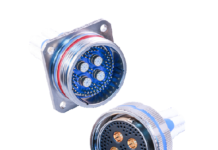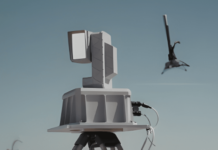Recent drone incidents in Denmark and Norway, along with increasing sightings over critical infrastructure in Germany, clearly show that the threat posed by unmanned aerial vehicles (UAVs) is steadily rising. At the same time, incomplete or misleading information about effective countermeasures continues to circulate. With this release, Aaronia AG aims to provide clarity and explain how modern drone detection systems work – and which solutions are already reliably available today.
Sensor Fusion – Multiple Technologies for Maximum Protection
Modern protection systems don’t rely on a single technology but instead on sensor fusion: radio frequency (RF) detection, radar, and cameras complement one another to create a comprehensive situational picture.
• RF detection provides the earliest warning signs.
• Radar independently confirms position and flight path, even without RF signals.
• Cameras enable visual verification, giving security forces the final basis for informed decisions.
RF Detection – The Heart of Early Warning
Many drones are controlled and monitored via radio links to their operators, while others (e.g., “kamikaze” or pre-programmed drones) fly autonomously without ongoing communication. That’s why any detection strategy must combine RF detection with additional sensor technologies.
The AARTOS system by Aaronia is a world leader in RF detection, offering:
• Frequency Coverage: 10 MHz to 8 GHz – covering key civilian and many military bands.
• Range: Detection possible up to 80 km in many scenarios – enough to secure large areas such as airports or industrial sites at an early stage.
• Intelligent Signal Processing: Signals are not only detected but also characterized, localized, and in part decoded. Real-time data such as drone and operator position, altitude, speed, or even serial numbers can be extracted and displayed.
• Jamming Capabilities: The AARTOS 360° Smart Jammer can precisely disrupt individual frequencies across a very wide range – not just standard bands. This makes it possible to counter non-standard or military frequencies with surgical precision, instead of indiscriminately blocking entire bands.
“RF detection is the foundation of effective protection,” explains Stephan Karschansky, CEO of Aaronia Austria. “Our systems often provide the earliest warning, long before a drone is visible. That gives security forces valuable time to assess the situation and plan appropriate measures.”
Radar and Cameras – Verification Stages
While RF detection delivers the first alert, radar independently verifies position and trajectory – even without a signal. Optical verification through cameras then enables clear identification. Only with this multi-step verification can security forces make sound decisions about countermeasures.
From Detection to Defense
Once a drone’s position is precisely located, targeted countermeasures become possible. The AARTOS system identifies both the drone and the potential source of its control signals, transmitting this information in real-time – for example via app – directly to security authorities.
Countermeasure Technologies
• Jamming: Targeted disruption of control links. The AARTOS 360° Smart Jammer precisely interferes with any chosen frequency, including non-standard and military bands.
• Spoofing: Manipulating GPS or navigation signals to mislead drones.
• Takeover: Forcibly assuming control of a drone through technical means.
All countermeasures are subject to strict legal frameworks and may only be used by authorized entities. The goal of modern systems is always to combine effectiveness with minimal side effects.
Proven Protection Worldwide
With more than 650 installations worldwide, the AARTOS system has been extensively field-tested. Users include major international airports such as Changi (Singapore), Muscat (Oman), and London Heathrow (UK). The system has also successfully secured high-profile events, most recently the NATO Summit in The Hague and the G20 Summit in Rio de Janeiro.
“The threat from drones is increasing – and so is the responsibility to protect critical infrastructure and large-scale events,” says Karschansky. “With AARTOS, we deliver a solution that is already in use worldwide and demonstrates its capabilities every single day.”


















